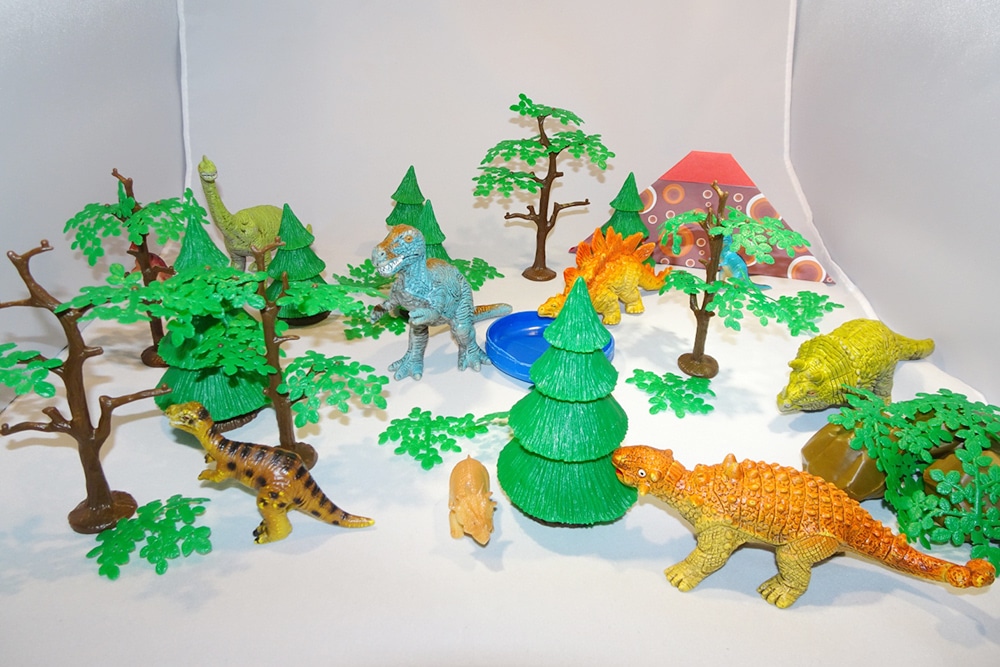MED-EL
Published Jun 10, 2016
Use Dinosaurs to Build These 3 Communication Skills

Who doesn’t like dinosaurs? They’re captivating, imaginative, fun to play with, and—most of all—are a great way to keep your child engaged.
Some rehabilitation exercises might seem rather dry, but add dinosaurs and *poof*: your child will think it’s all just a fun game!
Listening Skills
Here are some ways that you can use dinosaurs to build up your child’s communication skills:
- Repeating back sounds. When you play with sounds, you teach your child how to listen to the sounds you are making. This helps them to match the sounds they hear, and the sounds that they are making. Being able to compare these two sounds is a skill they’ll use in developing both their listening and their speaking skills.
- There are all kinds of dinosaurs, and they make all kinds of different sounds. This is great because it means your child can play and practice with a range of different sounds.
- Pick out a specific dinosaur and imagine a kind of sound it would make: roars, squeaks, flaps, splashes, and so on; or what different voices they might have: like a deep, booming voice for a large dinosaur or a high-pitched, quiet, voice for a small dinosaur. Then play with the dinosaur and say those sounds over and over. Leave plenty of time to encourage your child to imitate you and join in on the fun.
- Learning verbs. Having a wide vocabulary of verbs is important, because almost every sentence we say uses some sort of verb.
- Dinosaurs move in all sorts of ways, so you can use lots of different verbs to describe this.
- Pick out a dinosaur, and then play with it: move it around so that it stomps, flies, swims, waddles, runs, and so on.
- As you’re doing this, talk out loud about what the dinosaur is doing. “Look, the velociraptor runs!”
- You can also focus on past tense verbs when playing with the dinosaurs, like “This dinosaur ran from over there! See how it ran.”
- Describe how it looks. Using descriptive words is a great way to extend your child’s language skills. Your child might be able to name an object, or describe what it does, but descriptive words help them to talk about its different qualities.
- Since dinosaurs all look different, you can point out the different body parts and features of a variety of dinosaurs. Pick out one dinosaur and start to describe what it looks like: how tall it is, that it has some sharp horns, its neck is very long, its teeth are fierce, and so on.
- Tell a story. Learning to tell a story is an important part of clearly communicating a message. It includes concepts like sequencing, and explaining events that occurred. These help us to explain both what things happened, and in what order they happened.
- If you have lots of dinosaur toys, you could build a whole diorama like the picture at the top of this post. Fill it with dinosaurs and different props.
- Then, start telling a story about what’s going on. Who are the dinosaurs, and what are their names? Which ones are friends? What are they going to do today?
Speech Skills
Dinosaurs go beyond listening and can help your child develop clear speech.
- Pick out a dinosaur and model a speech sound for your child to listen to. Hand the dinosaur over to your child to encourage her to have a turn making the dinosaur sound. Take turns picking out a different dinosaur. Maybe your child will think of a sound for you to copy!
- Pretend to have a conversation between two dinosaurs.
- Have your child act as one of the dinosaurs, and you as the other.
- You don’t need to have a “real” conversation with words. Just focus on the simple sounds that your child needs to practice: like “huff huff huff,” or “pi pi pi.”
- Hold one of the dinosaur toys, and then move it around in different ways: running, flying, jumping, hopping, and so on.
- As it is moving around, say to your child what it is doing: “Run, dinosaur! Run! See it run!”
- Then give the dinosaur to your child, and look at them expectantly to show them that you’re waiting to hear their voice.
- Talk about the names of all the different dinosaurs.
- Try clapping out the syllables, for example with a Stegosaurus you would clap out four syllables: ste – go – sau – rus. Use acoustic highlighting to emphasize a syllable your child missed
- If your child is reading, write the word in syllables and point them out as you say them for your child to copy.
- This can be difficult for some young children, but even if your child doesn’t get them right, it’s still good practice and helps your child develop their ability to listen to, and remember, long words.
Theory of Mind
“Theory of Mind” is all about putting yourself in another person’s shoes. It means understanding that everyone has their own thoughts and beliefs, and that different people can have different thoughts. Here are some ways to build your child’s ToM skills:
- Talk about your favorite dinosaurs.
- Tell your child which ones are your favorite, and why: “I like the T-Rex because it is big!”
- Ask your child what dinosaurs they like.
- Talk about the dinosaurs that other people might like. Encourage your child to ask their other family members which dinosaur they like best. When your child hears many different perspectives, they’ll be able to better develop their ToM skills.
- Talk about the feelings dinosaurs might have, and why they might be having these different emotions.
- Tell your child what you think the Triceratops feels when the T-Rex comes around?
- Ask your child what they think the velociraptor might like to eat.
- Talk about things you can’t see right now, like what the dinosaurs might have done in the past. For example, you might like to talk about what you think the dinosaurs did at night time, or what colors you think the dinosaurs might have been when they were little. Did they grow in size? Did they change color as they grew up?
- Tell your child that you think this or that dinosaur might have been green or red or brown, and so on.
- Pick out a dinosaur and ask your child what color they think it would have been.
- Make a point of saying to your child that you think they may have been this color, or they may have been doing a particular activity in the morning—but you don’t actually know, because you didn’t see the dinosaurs.
Want to develop your child’s communication skills even more? Check out these other fun activities:
- Read books to build Theory of Mind skills
- 3 free activities, for children of all ages
- Make an experience book all about your child
And don’t forget, subscribe to the MED-EL blog for new activities every week!
This post was written with help from Rebecca Claridge, a speech and language pathologist.
MED-EL
Was this article helpful?
Thanks for your feedback.
Sign up for newsletter below for more.
Thanks for your feedback.
Please leave your message below.
Thanks for your message. We will reply as soon as possible.
Send us a message
Field is required
John Doe
Field is required
name@mail.com
Field is required
What do you think?
MED-EL


